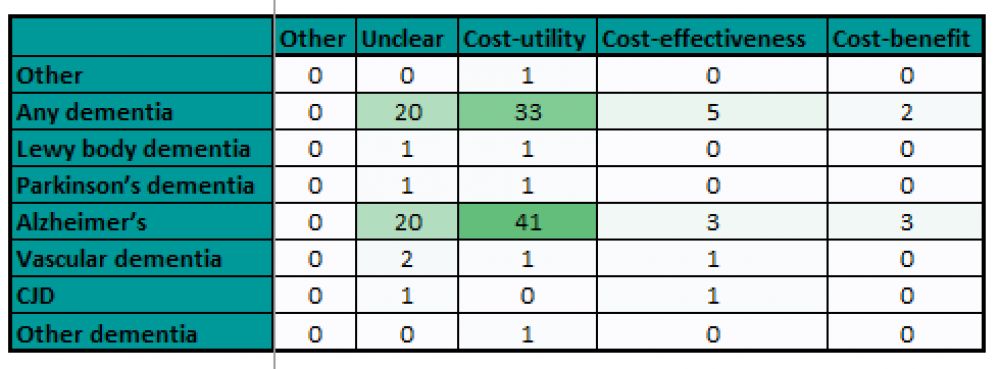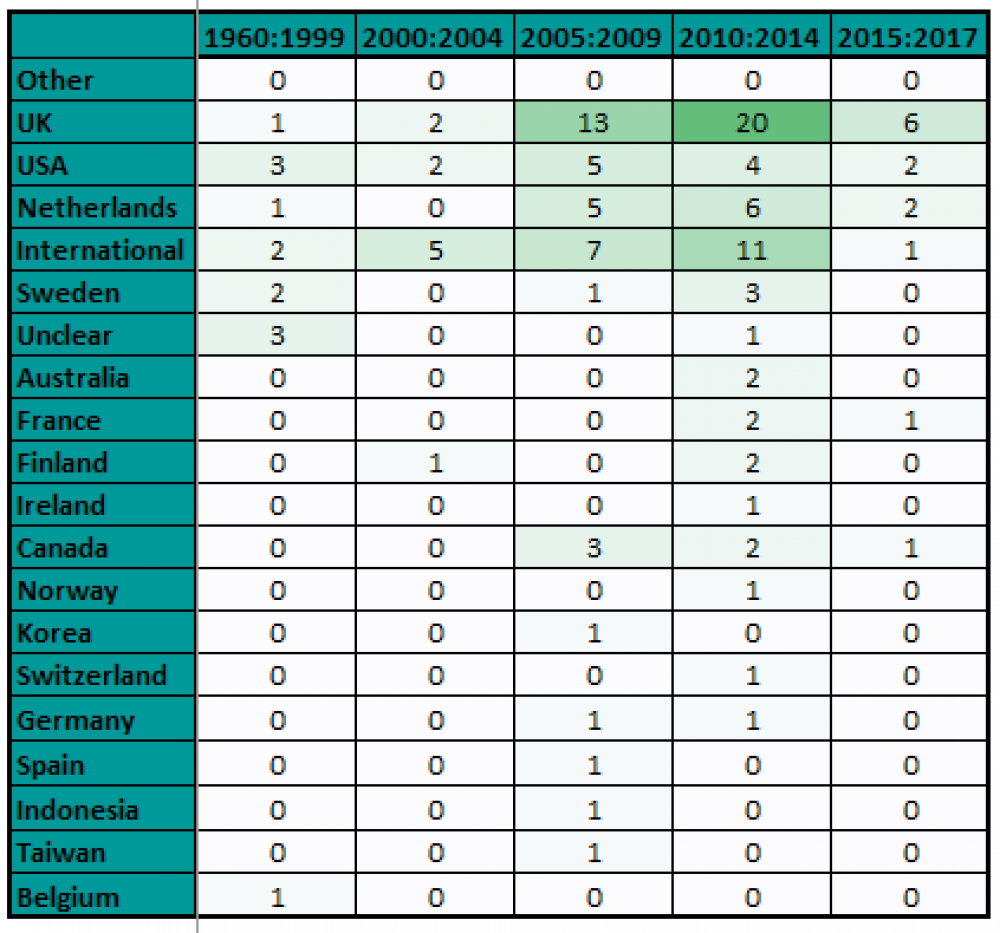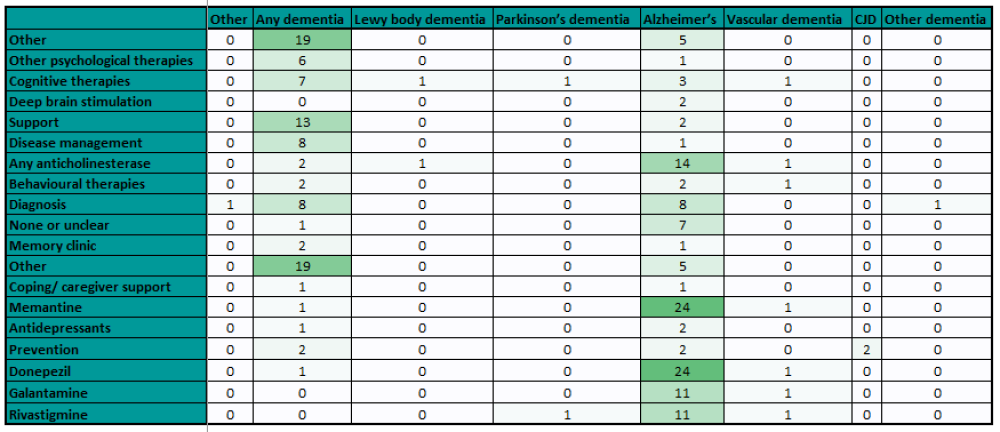An effortless and comprehensive approach to burden of illness reviews
Blog - Evidence Map of economic models in dementia
Published: 03-09-2017
We used the heoro.com database to create an evidence map of cost-benefit, cost-effectiveness and cost-utility models in dementia. We searched the database on 30th May 2017 using the following strategy:
- Disease: Dementia
- Study type: Economic modelling studies
- Economic models: Cost benefit study, Cost effectiveness study, Cost utility study
We identified 131 abstracts published since 1960. Of these, 76 were cost-utility models, 10 were cost-effectiveness models, 5 were cost-benefit models and 42 did not specify the modelling approach in the abstract. Seventy publications were published between 2010 and 2017, and 13 were published before 2000.
Download a free copy of the Evidence Map here. To use the Map, open it in Microsoft Excel and enable macros.
Sixty two models stated, or it could be deduced, that they used a societal perspective, 27 used a healthcare perspective, and in 42 cases the perspective could not be deduced from the abstract.
Most of the models were of Alzheimer's disease, followed by any type of dementia, including those studies where the type of disease was unclear from the abstract. Other types of dementia that were modelled include Lewy body and vascular dementia, and dementia associated with Parkinson's disease or Creutzfeldt-Jacob disease (CJD).
Map showing type of economic evaluation by type of dementia

The United Kingdom was the most frequent jurisdication for the models, followed by the United States, the Netherlands, Canada and Sweden.
Map of model jurisdiction by publication year

Drug therapies were the most frequent interventions modelled, in particular, donepezil, memantine, rivastigmine, galantamine, or any anticholinesterase. Other interventions modelled included screening or diagnostic approaches and caregiver support.
Map of interventions modelled by type of dementia

Map of interventions modelled by publication year

Map of intervention modelled by type of economic evaluation

The focus on cost-utility models from a societal perspective reflects the high impact of dementia on quality of life in patients and their caregivers. This is also shown by the substantial number of models on caregiver support and patient care interventions, including disease management approaches, as well as drug therapies. The preponderance of studies from the UK may reflect the burden on state-funded social care organisations in that country.
Download a free copy of the Evidence Map here. To use the Map, open it in Microsoft Excel and enable macros.